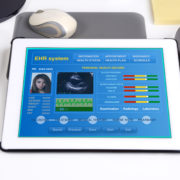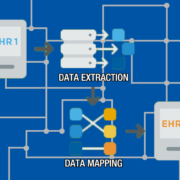How a cloud-based EHR system gives you the flexibility you need
Digitization is touching every corner of our lives. It connects everything from “learning” to adjust your home’s temperature every Thursday at seven when you get home from your regular hot yoga class to allowing surgeons to attempt different types of techniques virtually before picking up a scalpel with an actual patient. This intersection of supercomputing power, cloud computing, analytics and the Internet of Things is driving significant change in the medical sector, pushing demand from providers to deliver flexibility in operations. Here’s how using a cloud-based EHR can help deliver that level of flexibility.
How a cloud-based EHR system gives you the flexibility you need
When Hurricane Harvey struck Houston in 2017, many chronic pain patients had a serious problem. As their pain meds had begun to run out, the patients discovered that their doctors’ offices had either flooded or been closed due to damage. Unfortunately, the EHR records that would back up the patients’ history with those medications had also been damaged or disappeared in many offices where the records were only kept locally or backups were in banks that had been similarly impacted by the storm. Many of these patients suffered excruciating pain because they could no longer get their medications until their doctors’ offices opened again, weeks later in some circumstances.
The change to cloud-based EHRs have been somewhat slow, but issues similar to those in Hurricane Harvey have prompted many providers to consider these digitization-friendly formats. A cloud-based EHR not only provides better flexibility, but also better resiliency in a disaster. Because the records are stored remotely, it’s possible to pull them up on systems that have not been impacted by the disaster, making it easier to get your office back on its feet and your patients’ needs met during a stressful situation.
Cloud-based EHRs also provide superior flexibility and options for your practice. When your practice grows or shrinks, it’s very easy to size the EHR system up or down to meet your needs. The only change you need to make is to the number of users you have in your system and the hardware for them to access the records, such as tablets, desktop computers and similar devices. Good EHR systems can be configured in no time to meet your practice’s needs, whether you’re a single provider office or a large university-based department.
These EHRs are also often much more compatible with a range of different programs, including practice management, revenue cycle, patient access systems and a wide range of other options. These systems help make your practice more open and approachable for your patients while improving efficiency and reducing human error issues. They reduce the amount of time spent in office tasks, such as accounting, coding and similar tasks that tie up your staff and reduce your practice’s overall efficiency. Other opportunities these systems open make it easier to keep up with changing requirements, such as the recent Meaningful Use Stage 3 requirements for Medicare and Medicaid patients.
By making the change to a cloud-based EHR system, many practices are discovering that the flexibility these systems provide help them better meet patient needs. Whether in emergencies or everyday changes to the practice, these systems provide options for a wider range of opportunities. If your practice is ready to make the change from stand-alone EHR systems to a cloud-based system, Exscribe is here to help. Please feel free to contact us today for more information or to sign up for a free demo to see what we can do for your orthopedic practice.











